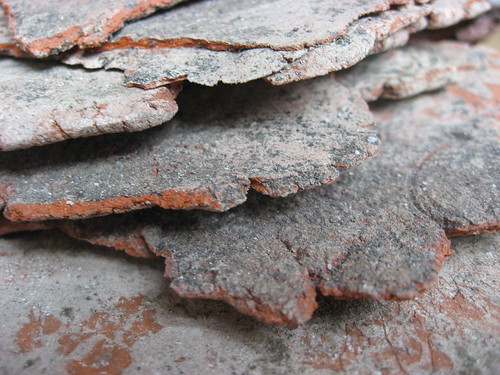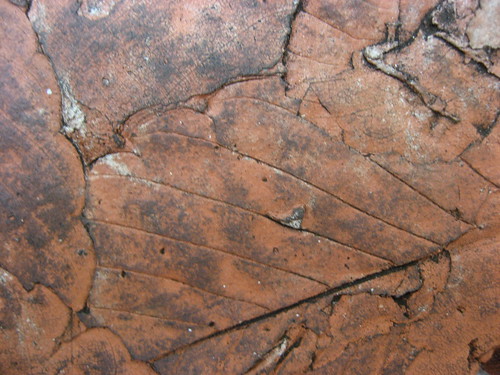Looking at the remains of this leaf I'm reminded of how I teach my students about two super-strong plant molecules, cellulose and lignin. Cellulose is in every plant cell. Per weight it has greater tensile strength than tempered steel. Lignin, which is shown in this picture, is the polymer that gives plants their woody texture. Both cellulose and lignin are practically indigestible. Some fungi and a few bacteria, perhaps a slime mold here and there, are the only organisms with the enzymes to break these babies down.

What does this have to do with clay? Clay molecules, basically aluminum silicates, are arranged not in polymers like cellulose and lignin, but in sheets of crystalline particles.
The clay body by itself is not strong. What amazes me about it is that the clay is suspended in water. Just like soil, even bone-dry clay has water molecules that cling to the clay particles by adhesion, and these aren't driven out until the kiln reaches about 451 degrees Farenheit, the infamous temperature at which paper (and books) burn.
That must be why Liew said, "To see if your salt or soda kiln is cool enough to crack open, put in a piece of paper. If it browns, the kiln is too hot."
That aside, it fascinates me that fired clay is as strong as it is. As I experiment with larger sculptural pieces I'll be interested to see just how far I can push the strength of the clay.


Sam -- find some great microscopic clay pics at this link:
ReplyDeletehttp://www.minersoc.org/pages/gallery/claypix/index.html